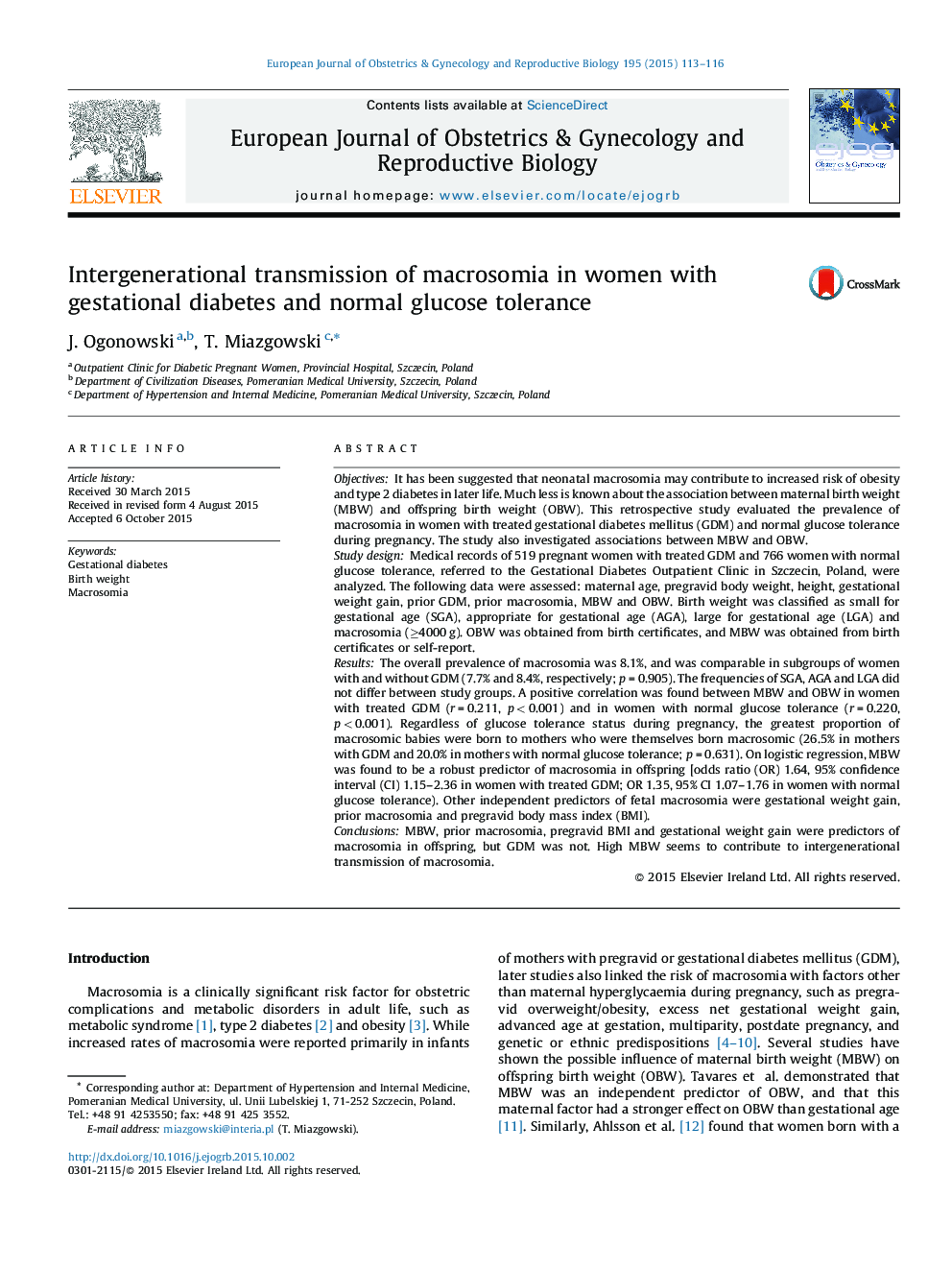| کد مقاله | کد نشریه | سال انتشار | مقاله انگلیسی | نسخه تمام متن |
|---|---|---|---|---|
| 3919575 | 1599786 | 2015 | 4 صفحه PDF | دانلود رایگان |
ObjectivesIt has been suggested that neonatal macrosomia may contribute to increased risk of obesity and type 2 diabetes in later life. Much less is known about the association between maternal birth weight (MBW) and offspring birth weight (OBW). This retrospective study evaluated the prevalence of macrosomia in women with treated gestational diabetes mellitus (GDM) and normal glucose tolerance during pregnancy. The study also investigated associations between MBW and OBW.Study designMedical records of 519 pregnant women with treated GDM and 766 women with normal glucose tolerance, referred to the Gestational Diabetes Outpatient Clinic in Szczecin, Poland, were analyzed. The following data were assessed: maternal age, pregravid body weight, height, gestational weight gain, prior GDM, prior macrosomia, MBW and OBW. Birth weight was classified as small for gestational age (SGA), appropriate for gestational age (AGA), large for gestational age (LGA) and macrosomia (≥4000 g). OBW was obtained from birth certificates, and MBW was obtained from birth certificates or self-report.ResultsThe overall prevalence of macrosomia was 8.1%, and was comparable in subgroups of women with and without GDM (7.7% and 8.4%, respectively; p = 0.905). The frequencies of SGA, AGA and LGA did not differ between study groups. A positive correlation was found between MBW and OBW in women with treated GDM (r = 0.211, p < 0.001) and in women with normal glucose tolerance (r = 0.220, p < 0.001). Regardless of glucose tolerance status during pregnancy, the greatest proportion of macrosomic babies were born to mothers who were themselves born macrosomic (26.5% in mothers with GDM and 20.0% in mothers with normal glucose tolerance; p = 0.631). On logistic regression, MBW was found to be a robust predictor of macrosomia in offspring [odds ratio (OR) 1.64, 95% confidence interval (CI) 1.15–2.36 in women with treated GDM; OR 1.35, 95% CI 1.07–1.76 in women with normal glucose tolerance). Other independent predictors of fetal macrosomia were gestational weight gain, prior macrosomia and pregravid body mass index (BMI).ConclusionsMBW, prior macrosomia, pregravid BMI and gestational weight gain were predictors of macrosomia in offspring, but GDM was not. High MBW seems to contribute to intergenerational transmission of macrosomia.
Journal: European Journal of Obstetrics & Gynecology and Reproductive Biology - Volume 195, December 2015, Pages 113–116
